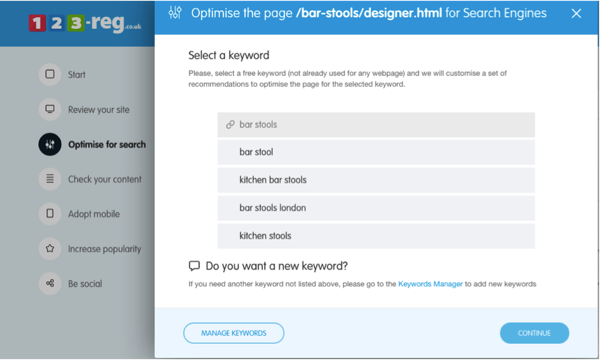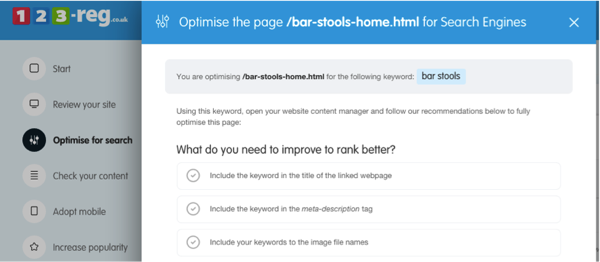It’s true: title tags and meta descriptions won’t help your website magically rise to the top of the search engine results. Google confirmed it back in 2007 so let’s kill that myth right at the outset. However, these two elements can improve click through rates and entice people to click on your link rather than the link of one of your competitors. So why do site owners neglect title tags and meta descriptions, pushing them to the back burner?
Title tags and descriptions tell search engines and users what your site is about. They describe the content on each page of your website and explain how it relates to a user’s search query. And, when used properly, they can act as a “hook” of your advertising in the search engine results.
If you don’t know what title tags and meta descriptions are, why they’re important and how to write them to get more prospects to click on your links in search engine results, we’ll explain it all in this short guide.
Let’s get started.
What are title tags and meta descriptions?
Title tags and meta descriptions are simple portions of HTML code located in the header of a web page. They play an important role in helping search engines understand what the content on a page relates to. They’re also what users see when they search for a keyword or phrase that triggers your site to appear. Well written and compelling meta tags can attract more users to click to your website from the search engine results.
The title tag
The title tag is the title element of a web page that summarises the content found on a page. It will appear in three key places: browsers, search engine results pages, and external websites.
There’s one important thing to keep in mind. Search engines expect to find the relevant keywords and phrases that describe what that page is about. So if the title you create is not relevant for the page, Google can choose to show a different title instead. You don’t want that to happen. Why? Because title tags are a great opportunity to attract prospects to click through to your site so make sure it gives an accurate, concise and compelling summary of what that page is about.
Here’s how the code looks:
<head>
<title>Your title here</title>
</head>
Show me some examples
To exemplify, we’ll use our Email Marketing page.
This is how the title tag appears in the top of a Chrome browser:

This is how it looks in the search engine results:

And this is how it appears when the page is shared on external sites, including social networks like Facebook, Twitter and LinkedIn:

The meta description
The description tag is intended to be a short summary of the content found on the web page. While the title tag is very limited, a meta description gives you a bit more space to tell users what you’re offering, and it’s an opportunity give them a compelling reason to click through to your page.
This is what the description tag looks like:
<head>
<meta name=”description” content=”This is where you add your meta description. Make it count.”>
</head>
Show me some examples
Let’s take a look at how the meta description for our 123-reg WordPress hosting page appears in search engine results:

Our latest advice in your inbox weekly! (click here)
How to write title tags and meta descriptions that get clicks
Below are a few tips that can help you to create title tags and meta descriptions that get clicked.
When writing title tags:
- Title must be highly relevant to the content found on that specific page.
- Place important keywords and phrases close to the front of the title tag.
- Write naturally for visitors and avoid keyword stuffing.
- Avoid duplication. Each page needs to have a unique title.
- Potentially include your brand name in the title tag.
- Keep it between 50 to 60 characters or as many characters as you can fit into a 512-pixel display. If you write a title that’s longer than that, it’ll get cut off, showing an ellipsis “….”.
- Make it compelling. Your title tag should be appealing enough to entice visitors to click to find out more about your offer.
When writing meta descriptions:
- Have unique descriptions for every page on your site.
- Create a compelling description using relevant keywords. Make sure what’s described is what the searcher will get.
- Inspire curiosity. Provide just enough information to explain what the page is about but not so much that it ruins the curiosity factor.
- Include a call to action within your meta description to give your reader a clear instruction of what action to take and what’s in it for them.
- Keep your meta descriptions between 100 and 150 characters. If they’re too long, search engines will cut off the extra characters.
- Monitor click through rates in Google Webmaster Tools and find pages with reasonable volume but low click through rate. Optimise the meta data for these pages.
How do I choose the right keywords?
The keywords or keyword phrases that you use in your title tags and meta descriptions need to be relevant to the content on a page. So if you have a landing page where you advertise wedding invitations, try using keywords like “elegant wedding invitations” or “cheap wedding invitations”.
For example, if you use the 123-reg Search Engine Optimiser tool, you’ll get recommendations on which keywords to use to optimise the meta tags and the content on your web pages.

This saves you time on keyword research. Plus, once you choose your main keyword, the tool will also suggest where to add it to properly optimise your page:

If you go to the “Review your site” section, it will also tell you whether you have pages that are missing meta descriptions so you can add them right away.
Wrapping up
While title tags and meta descriptions don’t play a direct role in helping your site rank in search engines, they are critical for user engagement and getting users to click through to your website. So don’t ignore them as they’re the only elements standing between a search result and a visitor.
Have any other tips or advice on how to write title tags and meta descriptions that attract clicks? We’d love to read them below


Post a Comment